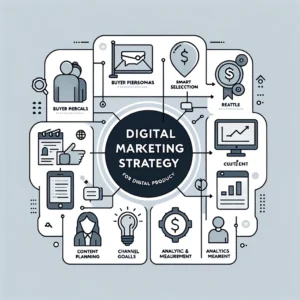Determining the right price for your products or services can be the linchpin of success. Pricing isn’t just about covering costs and earning a profit; it’s a multifaceted strategy that influences how your brand is perceived, positions you in the market, and ultimately determines your competitive edge. For those with an intermediate understanding of business practices, delving deeper into pricing strategies opens up a realm of possibilities for enhancing business performance and customer engagement.

At its core, a pricing strategy is about finding the sweet spot where value meets profitability. Whether you’re launching a new product, entering a new market, or looking to revamp your current pricing model, understanding and implementing the right strategy is crucial. This comprehensive guide will explore various facets of pricing strategies, shedding light on how they can be effectively utilized to meet business objectives while catering to customer needs.
In the following sections, we will break down the complexities of pricing strategies, covering everything from basic concepts to advanced tactics. You’ll learn about different pricing models, how to implement them effectively, and navigate the challenges that come along. With real-world examples and actionable insights, this guide aims to equip you with the knowledge and tools to refine your approach to pricing, ensuring it aligns with your business goals and market dynamics.
Understanding the Basics of Pricing Strategy
Before diving into specific strategies, it’s essential to grasp the fundamental concepts underlying pricing in a business context. A well-thought-out pricing strategy is more than just setting a price; it’s about aligning your pricing with your overall business goals, understanding your market, and resonating with your customers.
Defining Pricing Strategy: What It Means for Businesses
A pricing strategy is a model or method used by businesses to establish the best price for their products or services. It’s an integral part of a business’s marketing plan and directly impacts the profitability and sustainability of a company. This strategy is influenced by multiple factors, including production and operational costs, competitor pricing, market conditions, and customer demand. The right pricing strategy not only covers your costs but also reflects the product’s value, strengthens market position, and maximizes revenue.
Are you looking for expert who will help you with pricing strategy?
Understanding the different types of pricing strategies is key for businesses looking to find the right approach. These include cost-plus pricing, where a fixed percentage is added to the product cost; competition-based pricing, which considers competitors’ pricing; and value-based pricing, which is determined by how much the customers believe a product is worth.
Key Components of an Effective Pricing Strategy
To develop an effective pricing strategy, several core components must be considered:
- Cost Analysis: Understanding your cost structure is critical. This includes fixed costs (like rent and salaries) and variable costs (like materials and production costs). Accurate cost analysis ensures that the price set covers expenses and generates a profit.
- Market Understanding: Knowing your market and customer base is vital. This includes understanding the demand for your product, customer price sensitivity, and the economic environment of your industry.
- Competitive Landscape: Analyzing your competitors’ pricing strategies offers valuable insights. It helps in positioning your product in the market and ensures you remain competitive.
- Value Proposition: Your pricing should reflect the value your product or service provides to customers. The perceived value can often be a more significant determinant of price than the actual cost of production.
- Pricing Goals: Clearly define what you want to achieve with your pricing strategy. Goals can range from maximizing profit, increasing market share, entering a new market, or simply surviving in a competitive industry.
- Adjustment and Flexibility: Markets are dynamic, and so should be your pricing strategy. Regularly reviewing and adjusting your prices in response to market changes, customer feedback, and other external factors is crucial.
An effective pricing strategy is a balance of these components, tailored to fit the unique needs and goals of your business. It requires careful consideration and ongoing adjustment to ensure it remains effective.
Core Pricing Strategies Explained

In the realm of business, several core pricing strategies are commonly employed. Understanding these strategies and their applications can significantly impact how a business competes in the market and connects with its customers. For those with an intermediate understanding of business concepts, grasping these strategies can be pivotal in making informed pricing decisions.
Cost-Plus Pricing: A Straightforward Approach
Cost-plus pricing, also known as markup pricing, is one of the simplest and most traditional methods of pricing. In this approach, a business calculates the total cost of producing a product and then adds a predetermined percentage of profit to determine the selling price. This method ensures that all costs are covered, and a consistent profit margin is maintained.
While cost-plus pricing is straightforward, it has its limitations. It does not consider market demand or competition, which can be a drawback in highly competitive markets or industries with fluctuating costs.
Value-Based Pricing: Customer-Centric Tactics
Value-based pricing is a strategy that sets prices primarily, but not exclusively, based on the perceived or estimated value of a product or service to the customer rather than on the cost of the product or historical prices. This strategy is customer-focused and aligns the price with the product’s value to the customer.
This method is particularly effective for products or services with distinguishable qualities or unique features that provide added value to the customer. However, it requires in-depth market research and customer analysis to understand the perceived value accurately.
Competition-Based Pricing: Navigating Market Dynamics
Competition-based pricing involves setting prices based on competitors’ strategies, prices, costs, and market offerings. In highly competitive markets, this strategy helps businesses stay competitive and avoid pricing themselves out of the market.
While this approach can be beneficial in certain industries, it may lead to a price war, which can be detrimental to the market as a whole. Additionally, it might not adequately reflect the unique value proposition of your products or services.
Dynamic Pricing: Adapting to Market Changes
Dynamic pricing is a flexible pricing strategy where prices are adjusted in response to real-time market demands and conditions. This strategy is commonly used in industries like hospitality, travel, and e-commerce, where prices fluctuate based on demand, availability, customer profiles, and other external factors.
Dynamic pricing allows businesses to maximize profits by capitalizing on high-demand periods while remaining competitive during slower periods. However, it requires sophisticated software and algorithms to monitor market conditions and adjust prices accordingly.
Implementing a Successful Pricing Strategy
Implementing an effective pricing strategy is a crucial step for any business. It involves not only understanding various pricing models but also how to apply them in real-world scenarios. This section provides a step-by-step guide on conducting market research, analyzing competitor pricing, setting pricing objectives, and the best practices for testing and adjusting prices.
Conducting Market Research: A Step-by-Step Guide
Effective market research is foundational for a successful pricing strategy. It involves:
- Identifying Target Customers: Understand who your customers are, their needs, preferences, and willingness to pay.
- Analyzing Market Trends: Stay informed about the latest trends and changes in your industry, including demand fluctuations and consumer behavior.
- Evaluating Customer Perceptions: Gauge how customers perceive your product or service and what they consider a fair price.
- Collecting Competitor Insights: Study your competitors’ pricing strategies, strengths, and weaknesses.
Market research helps in setting prices that not only attract customers but also position your product effectively in the market.
Analyzing Competitor Pricing: Tools and Techniques
Analyzing your competitors’ pricing can provide valuable insights. This includes:
- Benchmarking: Compare your prices against competitors to identify pricing opportunities or threats.
- Monitoring Promotions: Keep track of competitors’ sales and promotions, as these can affect customer expectations.
- Using Analytical Tools: Leverage tools like price tracking software to gather and analyze competitor pricing data.
Setting Pricing Objectives: Balancing Profit and Market Share
Your pricing objectives should align with your overall business goals. Common objectives include:
- Maximizing Profit: Setting prices to achieve maximum profitability.
- Increasing Market Share: Pricing competitively to attract more customers and increase market share.
- Skimming: Setting high prices initially and lowering them over time.
- Penetration Pricing: Setting low prices to quickly gain market share and then gradually increasing them.
Testing and Adjusting Prices: Best Practices
Regularly testing and adjusting your prices is key. This involves:
- A/B Testing: Experimenting with different prices to see which yields better results.
- Customer Feedback: Gathering customer opinions on pricing and adjusting accordingly.
- Market Response Monitoring: Observing sales and market response to price changes and tweaking as needed.
Effective pricing is a dynamic process that requires continuous evaluation and adjustment to align with market conditions, competitor actions, and consumer preferences.
Challenges and Solutions in Pricing
Developing and implementing a pricing strategy is fraught with challenges. However, understanding these challenges and knowing how to address them can significantly enhance a business’s ability to set effective prices.
Common Pitfalls in Developing Pricing Strategies
Some common challenges in developing pricing strategies include:
- Misunderstanding Market Dynamics: Failing to accurately gauge market demand and customer willingness to pay can lead to ineffective pricing.
- Overlooking Costs: Not fully accounting for all costs can result in prices that don’t cover expenses or maximize profits.
- Ignoring Competitors: Neglecting to consider competitors’ pricing strategies can lead to unfavorable market positioning.
- Inflexibility: Being rigid in pricing can lead to missed opportunities, especially in dynamic markets.
- Neglecting Customer Perceptions: Misjudging how customers perceive value can result in pricing that either undercuts the product’s worth or prices it out of the market.
Overcoming Pricing Strategy Challenges
To overcome these challenges:
- Conduct Thorough Market Research: Regularly gather and analyze market data to stay informed about customer preferences, competitor actions, and market trends.
- Engage in Cost Analysis: Continuously review and update your understanding of the costs associated with your product or service.
- Monitor Competitor Actions: Stay aware of how competitors are pricing similar products and adjust your strategy accordingly.
- Adopt Flexible Pricing: Be open to adjusting prices based on market feedback, seasonal demand, and other external factors.
- Understand Customer Value Perception: Regularly gather feedback from customers about how they perceive the value of your product and what they are willing to pay.
By addressing these challenges proactively, businesses can refine their pricing strategies to be more effective and responsive to market needs.
Advanced Concepts in Pricing Strategy
Beyond the basics, there are several advanced pricing concepts that can offer businesses a competitive edge. These strategies require a deeper understanding of market psychology, segmentation, and ethical considerations.
Psychological Pricing: Influencing Consumer Perception
Psychological pricing strategies are designed to have a psychological impact on consumers. They are based on the idea that certain prices have a psychological impact. Common tactics include:
- Charm Pricing: Setting prices just below a round number (e.g., $9.99 instead of $10) to make the price seem significantly lower.
- Prestige Pricing: Setting higher prices to convey quality and exclusivity.
- Odd-Even Pricing: Using odd numbers to portray bargains and even numbers for quality.
- Anchoring: Placing higher-priced items next to lower-priced ones to make the latter seem more affordable.
These strategies play on consumer psychology to drive sales and can be particularly effective when aligned with the target audience’s perceptions and expectations.
Price Discrimination: Ethical Considerations and Strategies
Price discrimination involves charging different prices to different groups of consumers for the same product or service. It’s often based on factors like location, purchase time, or customer segment. While it can maximize profits and market efficiency, it raises ethical considerations and requires careful implementation. Businesses must ensure that their pricing strategies are fair, transparent, and do not exploit specific customer groups.
Implementing price discrimination effectively involves:
- Segmenting the Market: Identify different customer segments with varying willingness to pay.
- Tailoring Prices: Adjust prices for each segment based on their specific characteristics and needs.
- Maintaining Transparency and Fairness: Be open about pricing practices and ensure they are perceived as fair by customers.
Advanced pricing strategies like psychological pricing and price discrimination require a nuanced understanding of the market and customers. When implemented thoughtfully, they can enhance a business’s ability to attract and retain customers across different segments.
Case Studies and Real-World Examples
Examining real-world examples and case studies of pricing strategies offers valuable insights into their practical applications and effectiveness. In this section, we will look at successful pricing strategies across different industries and analyze lessons learned from pricing strategy failures.
Successful Pricing Strategies in Different Industries
- Technology Industry: Companies like Apple use a combination of premium pricing and skimming. They launch products at high prices, targeting early adopters and then gradually reduce prices.
- Retail Sector: Walmart employs an everyday low pricing strategy, focusing on maintaining consistently low prices rather than relying on sales or discounts.
- Airline Industry: Dynamic pricing is widely used in the airline industry, with prices fluctuating based on demand, booking time, and other factors.
- E-commerce: Companies like Amazon use dynamic and competitive pricing strategies, constantly adjusting prices based on market demand and competitor pricing.
These examples highlight how businesses adapt their pricing strategies to their market, customer base, and overall business objectives.
Lessons Learned from Pricing Strategy Failures
Understanding failures in pricing strategies is just as crucial as recognizing successes. For instance:
- J.C. Penney’s Pricing Overhaul Failure: In 2012, J.C. Penney attempted to replace discounts with everyday low prices. The drastic change confused and alienated customers accustomed to sales, leading to a significant drop in sales.
- Netflix’s Pricing Misstep: In 2011, Netflix decided to separate its DVD rental and streaming services, effectively doubling prices for customers who wanted both. This led to widespread customer backlash and a significant loss of subscribers.
These examples illustrate the importance of understanding customer expectations and market conditions. Sudden and significant changes in pricing can lead to customer dissatisfaction and loss, emphasizing the need for gradual implementation and clear communication with customers.
Conclusion Pricing Strategy
Pricing strategy is an essential aspect of business that goes beyond mere number crunching. It is a complex blend of market understanding, customer insights, cost analysis, and psychological factors. This guide has navigated through the various dimensions of pricing strategies, from the basic principles to advanced concepts, providing a roadmap for businesses to develop and implement effective pricing models.
We’ve explored different pricing strategies like cost-plus, value-based, competition-based, and dynamic pricing, each with its unique applications and considerations. Implementing these strategies requires thorough market research, understanding of customer perceptions, and continuous adjustment to align with market dynamics.
Real-world case studies have illustrated how successful pricing strategies can enhance market position and profitability, while also highlighting the consequences of missteps in pricing decisions. These examples serve as valuable lessons in the importance of understanding market trends, customer expectations, and the importance of flexibility in pricing.
In conclusion, a well-thought-out pricing strategy is crucial for any business looking to thrive in today’s competitive market. By carefully considering the factors discussed in this guide and continuously adapting to market changes, businesses can set prices that not only cover costs and generate profits but also resonate with customers and strengthen market position.



